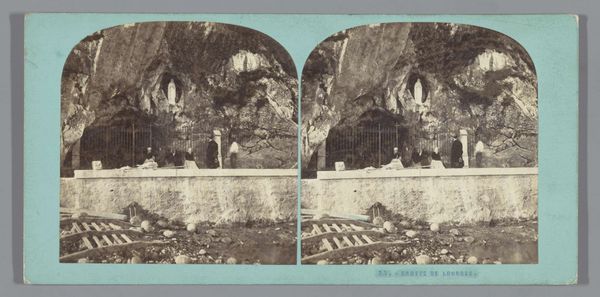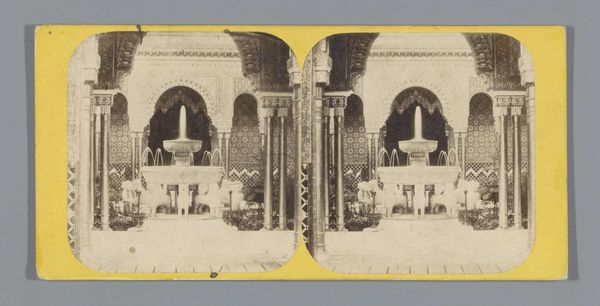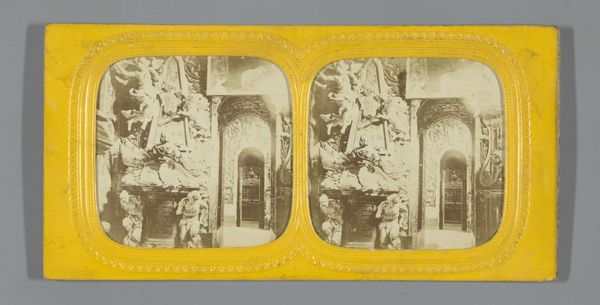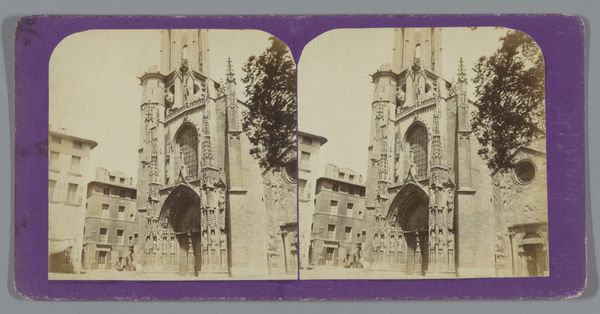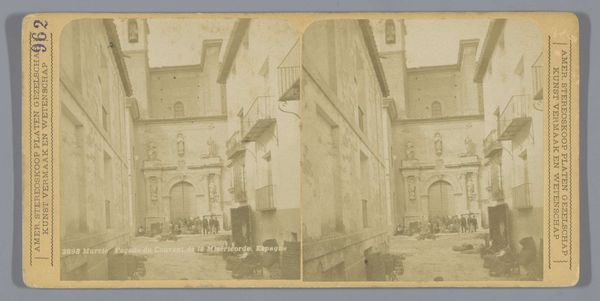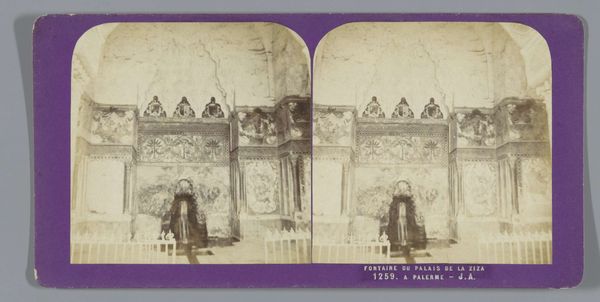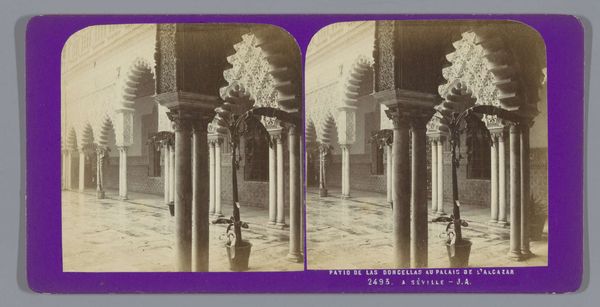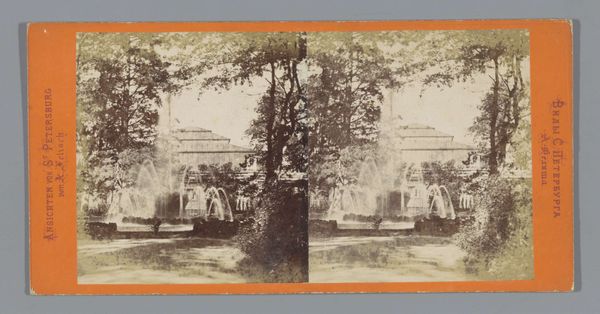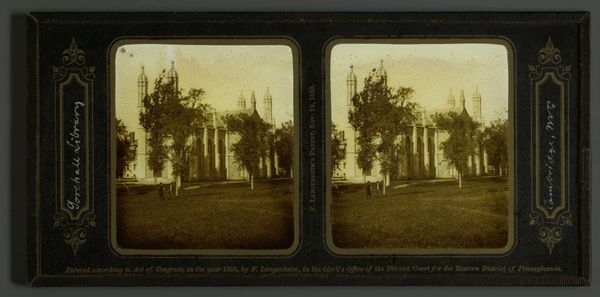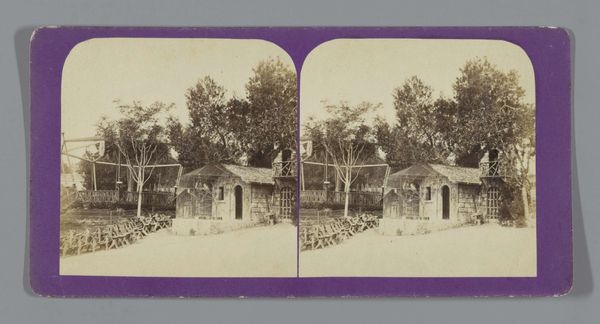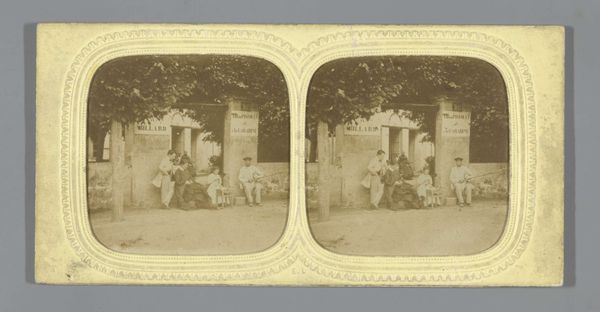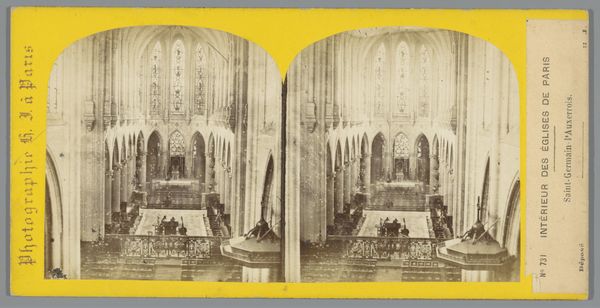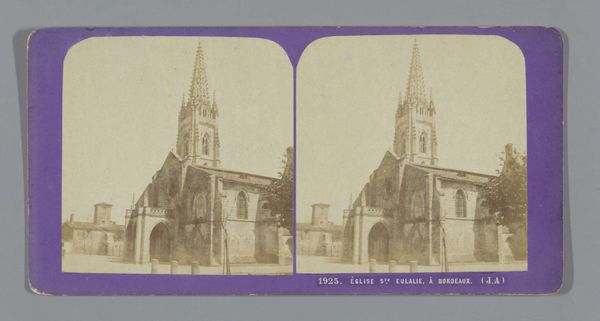
Dimensions: height 85 mm, width 170 mm
Copyright: Rijks Museum: Open Domain
This stereoscopic photo of the Calvarium of Notre-Dame des Accoules in Marseille was produced by Jean Andrieu, sometime in the mid-19th century. It’s a compelling example of early photographic technique, and the way it can transform the familiar into something new. The stereoscopic process involves taking two photographs of the same subject from slightly different angles, and then mounting them side-by-side. When viewed through a special viewer, the brain combines the two images to create an illusion of depth. This would have made the scene appear remarkably lifelike to viewers at the time. What I find most interesting is the democratizing effect of this technology. Photography made image-making far more accessible to a wider range of people, both as producers and consumers. It allowed for the mass production and distribution of images, which in turn helped to shape public opinion, document historical events, and promote tourism. Andrieu’s stereoscopic photo of the Calvarium is thus a testament to the power of new technologies to reshape our experience of the world. It reminds us that art is not just about aesthetics, but also about the social and economic forces that shape its production and consumption.
Comments
No comments
Be the first to comment and join the conversation on the ultimate creative platform.
